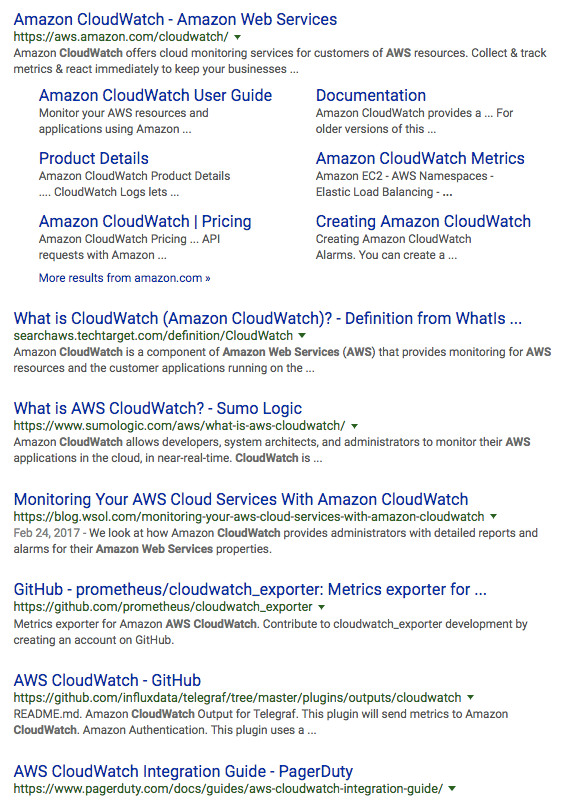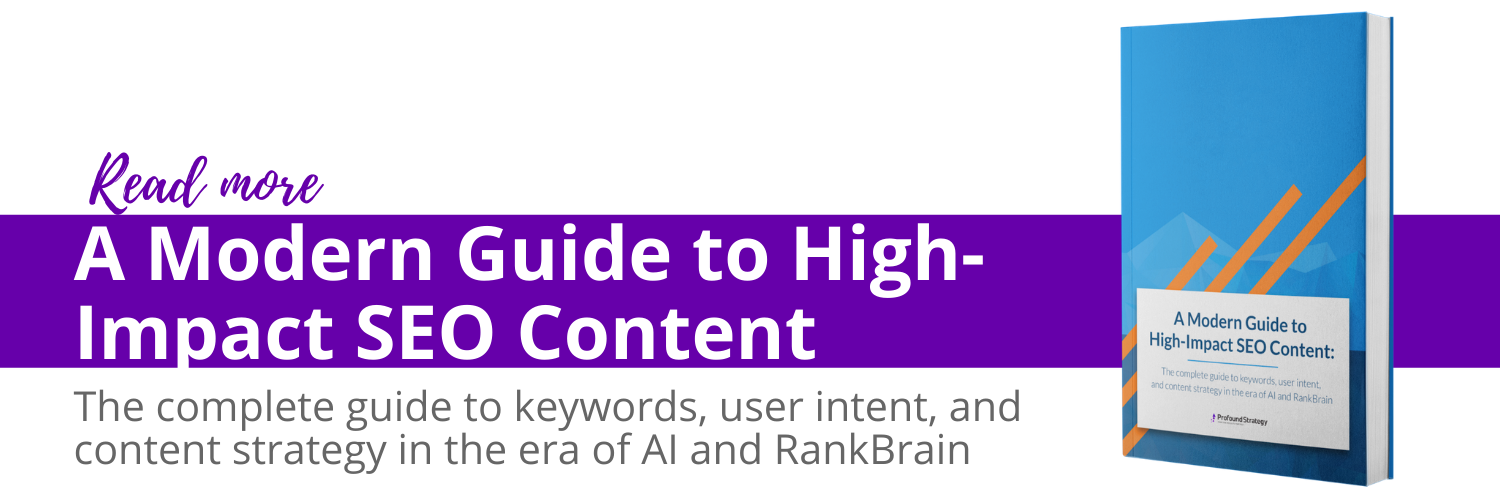SEO for Tech Brands: 5 Mistakes Most Technology Companies Make (and How to Avoid Them)
One of the biggest SEO mistakes tech companies make is thinking that their marketing approach should be the same as other industries. They write content for leaders and decision-makers, fill the content with aesthetically pleasing imagery, and wonder why their organic traffic isn’t growing.
For tech companies to really excel with SEO, you need to be ready to break a lot of rules.
The tech industry has a unique audience, and that audience is looking for more detailed information than the typical B2B buyer. Speak to the wrong audience, or provide the wrong content, and efforts will fail.
If your SEO program isn’t driving results, it may be riddled with common misconceptions and misinformation. The past three years of specialization has taught me that successful SEO for tech companies requires understanding and applying the very unique best practices of tech company SEO—and avoiding some common mistakes.
Mistake 1: Addressing the Wrong Audience
Creating content that targets the right audience is important for every industry, but it’s particularly crucial for the tech industry because of the diverse needs of your audience. Many companies make the mistake of overestimating or underestimating their audiences, leading to content that will never rank well in organic search.
In the tech industry, decision-makers include both the C-suite and product or subject matter specialists. The people signing the checks for big, B2B purchases tend to lean very heavily on their in-house experts who will actually be using the platform or tool.
- The C-suite prefers high-level benefits and a clear explanation of a product’s ROI.
- Subject matter specialists prefer in-depth technical discussions that include examples of code.
Don’t misread your true audience audience. After selecting a topic and keyword, conduct user intent research—review the SERPS, and determine which audience the top-ranked results are targeting. Write content for that audience.
Keep in mind that there are often two audiences: the basic learner looking for simple how-to guidance with examples, and the more advanced architect who is looking for a conceptual discussion and more advanced application.
Don’t be afraid to target both.
Focus on a specific user intent and keyword combination, and use content to clearly distinguish the focus of each and how they connect.
Additionally, a higher-than-average bounce rate doesn’t necessarily mean content isn’t resonating with your audience. For example, if you write content for a more advanced audience, people looking for basic information may find it and—naturally—hit the back button.
One way to avoid a high bounce rate is to link to more basic/more advanced information early in content to direct different audiences to more appropriate information.
Mistake 2: Ineffective CTAs
Content must be catered to the right audience, and the same is true for CTAs.
Many tech marketers make the mistake of including a single free-trial CTA on all landing pages and blog posts, but not everyone is ready for a free trial. This approach drives away decision-makers who have additional educational needs, forcing them to look for information elsewhere.
A blog is a great place for original content that can be used to target top-of-the-funnel queries. Each post should be a starting point for education, and CTAs should be used to drive visitors deeper into the funnel. Think beyond the free trial, and send visitors somewhere relevant:
- Establish blog categories and tags to organize and connect relevant content.
- Design each post as a mini landing page that links to related resources.
- Pick a very strategic call-to-action that directs visitors to another resource, blog post, or category page. Select something low-entry that will continue to build value without scaring visitors away with an ask that’s too big, too early.
Visitors may not know your brand or product—and they may not care—but if you published a great article that they enjoyed, they’ll likely want to continue reading.
Mistake 3: Inventing Unnecessary Terminology
The technology industry is grounded in innovation. And while innovation is great for startups and sales, it’s not always great for SEO.
Because tech brands are focused on innovation, they often develop new technologies, and those new technologies have to be named. Unfortunately, until the technology becomes more familiar, the name you come up with isn’t something users will be searching for. If users aren’t searching for it, no amount of optimization for that term will drive traffic.
To combat this issue, new tech must be presented within the context of well-known categories and terminology.
Say your company produces widgets and screwtops, but your audience really needs a solution to improve how widgets and screwtops work together. There’s absolutely nothing on the market, so you develop and engineer a solution. Now you have to name it, but no one knows what the solution is called, because you just invented it.
This issue can be solved by making sure the name of the new solution is very closely associated with well-known terms—widgets and screwtops in this example—in your content. For example, the page title may be, “DotBots: A New Solution for Widgets and Screwtops.”
Another example of this problem arises when marketers rename existing terminology to differentiate their products from the competition. From a branding perspective, this may be effective, but from an SEO perspective, it fails.
If it’s possible to avoid a new term, avoid it—at least where SEO is concerned.
But if renaming an existing technology is crucial, just make sure to connect the new term with better-known terms in site content, and explain in text why you call the technology something different: “We call it [new name] because [why it’s different].”
Mistake 4: Hoarding Content in Silos and PDFs
In most high-tech industries, information is gold. Brands that publish technical documentation, how-to guides, and detailed coding insights can earn high rankings for competitive keywords.
Consider “AWS Cloudwatch. The first organic result is, of course, a branded sales page, but there is a lot of non-branded learn intent that is also ranking really well. Page 1 content includes definitions of the keyword, and several detailed implementation resources – some with documentation.

Here, technical content is helping some companies rank on Page 1 for affiliated technical terms.
Publishing high-quality technical content also helps brands dominate the SERPs for branded queries. A great example is “AWS EC2“. Amazon has earned every single one of the top ten results with its branded content and product documentation.
But high rankings aren’t possible if content is published in paper manuals, PDFs, or across multiple sites. Instead, landing pages, blog content, and product/technical documentation should be integrated and optimized:
- Don’t hoard content in PDFs and paper manuals. Developers, programmers, and architects may want to review product documentation before making a purchasing decision—not just after. It’s fine to have a documentation hub, but take the most valuable, relevant, and informative content from the hub and find ways to repurpose it on your website.
- Repurpose content from your user forum. Detailed coding insights are high value and should not be just isolated to your user community. The more technical the target term, the more valuable it is to utilize the content in a tutorial or how-to guide on your site.
- Publish product-agnostic content. Your marketing website doesn’t have to be focused solely on product information. A blog is a great place to target more general technical topics to boost brand awareness, earn rankings for competitive terms, and build credibility with audiences.
- Tie content together with links. Use Wikipedia as your muse, and link generously. Utilize internal links to connect relevant content from your website, blog, community, and hub, providing answers to detailed questions and keeping users engaged.
- Gate content sparingly. Putting your most valuable content behind a form drives technical contributors away. When faced with gated content, 15% of IT decision-makers will leave a site completely, and another 59% provide fake information.
.
. - Use Bitbucket or Github to your advantage. Bitbucket is a great way to build credibility with tech practitioners when used correctly. Content on these platforms should provide a lot of value, and should be linked to from your brand website. But make sure to not give everything away. Some brands make the mistake of creating huge pages, which distracts from branded content on their websites.
In the tech industry, transparency inspires trust—and it also earns higher rankings in search.
Mistake 5: Neglecting or Oversimplifying Sales Content
Like blog content and CTAs, sales pages must target the right audience. High-level benefit lists don’t satisfy the needs of developers and architects, and detailed code examples encourage the C-suite to hit the back button. (That user intent research mentioned above will help you figure out which audience to prioritize.)
Sales content must target the right audience, and use the right materials to meet that audience’s needs:
- Cater the level of information provided to meet the needs of the target audience. For individual contributors, include technical information, detailed feature specs, and code examples. For the C-suite, focus on your value-add, benefits, and what makes your product different from competitors.
- Include relevant diagrams, videos, and product screenshots, and cater those to the target audience as well. Visual imagery is a consistent positive ranking factor for technical content.
- Remember to crosslink. Use the right CTA, and don’t send everyone to a free trial signup page. Link to related content hubs, product documentation, and blog posts when possible.
- Cater sales pages to the right audience—avoid stock images, use the appropriate language and terminology, and provide additional helpful resources—to build trust and credibility with that audience. The conversion will follow.
Effective SEO for Tech Companies
The tech industry has its own unique set of SEO best practices. Traditional marketing approaches fail to engage and—therefore—fail to drive traffic, improve organic rankings, or generate revenue. Avoid common mistakes to turn your SEO program around and start meeting goals and making progress.
Taking time to conduct user intent research for important pages/content is a good starting point. If content targets the wrong audience, it will never rank.
Make sure existing content caters to the right audience, then scour existing sources and documentation for opportunities to create new content, develop more internal linking opportunities, and earn the trust of your audience.
What's Next?
Profound Strategy is on a mission to help growth-minded marketers turn SEO back into a source of predictable, reliable, scalable business results.
Start winning in organic search and turn SEO into your most efficient marketing channel. Subscribe to updates and join the 6,000+ marketing executives and founders that are changing the way they do SEO:
And dig deeper with some of our best content, such as The CMO’s Guide to Modern SEO, Technical SEO: A Decision Maker’s Guide, and A Modern Framework for SEO Work that Matters.





